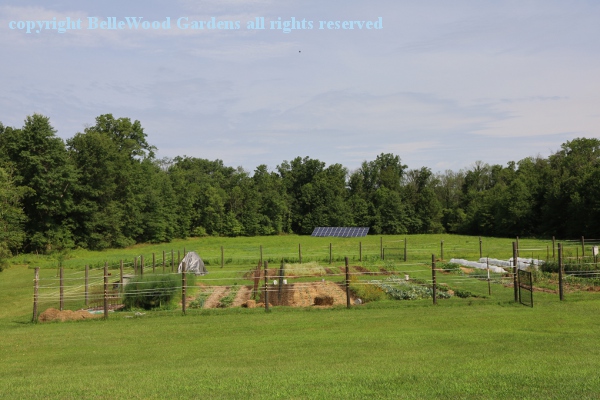
.
If you have any comments, observations, or questions about what you read here, remember you can always Contact Me
All content included on this site such as text, graphics and images is protected by U.S and international copyright law.
The compilation of all content on this site is the exclusive property of the site copyright holder.
An Exemplary Vegetable Garden
Saturday, 20 July 2019
My house and garden seem to always be in woodland settings. Which makes it difficult to grow vegetables. They want to have sunlight, lots of it. In Connecticut there was a community garden in Allens Meadow. Three acres, two under cultivation and one acre fallow. Over time I somehow became the coordinator. I managed to have a point well installed, arranged the plowing and marking out of the plots. And raised large quantities of excellent produce. Good memories. However here in New Jersey about the only possible place for vegetables would be in pots, or in place of the front lawn. Which friends in Connecticut had done, replacing the front lawn with a vegetable garden. I admire vegetable gardens, love to visit them. So when Alfie said his wife had a wonderful vegetable garden I asked to make a visit. So glad that I did!

It is, as you can see, spacious. Definitely in full sun. Well protected from the deer with an electric fence. There is a grass path inside the fence, all around the perimeter. And internal paths that divide the area into four quadrants. Each row is 50 feet long and 5 feet wide. The width makes it easy to reach in for necessary work. And harvesting.
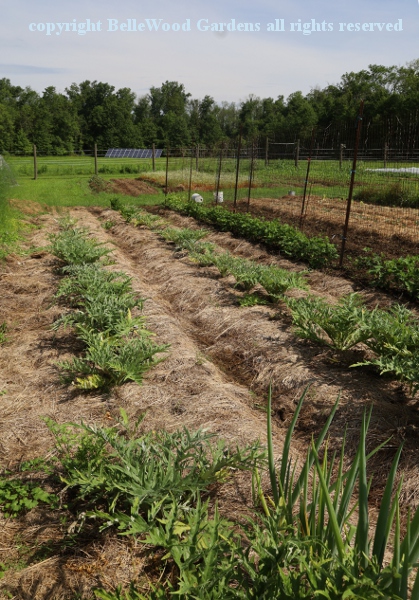
The rows are mulched with not-very-good hay, or aged wood chips.
On the soil, under the mulch, is either cardboard or newspaper.
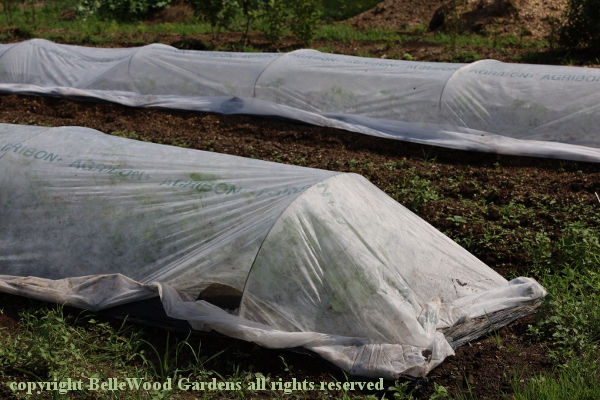
Remay, horticultural fleece, is used for several purposes. Here, in July,
it helps new transplants settle in with less stress from the hot July weather.
In early spring it means transplants can go outside sooner than if exposed to
lingering frosts. In fall, semi-tender plants can cope with the first frosts. And
covering eggplants until they begin to flower protects them from insect pests.
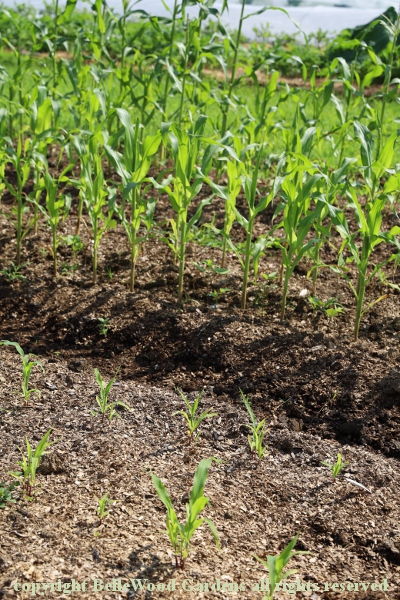
Sequential planting of corn means that some will be coming along
while the earlier sowing is being enjoyed. And as one batch is done,
out it comes. That will provide space for something to follow along.
It's called succession cropping, and makes good use of the ground.
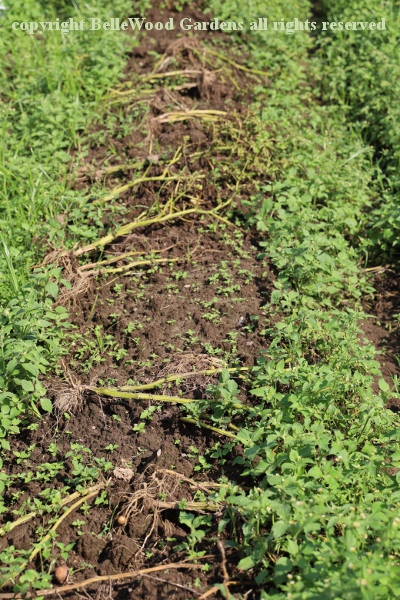
The first potatoes have been dug. Nothing as delicious as little new potatoes.
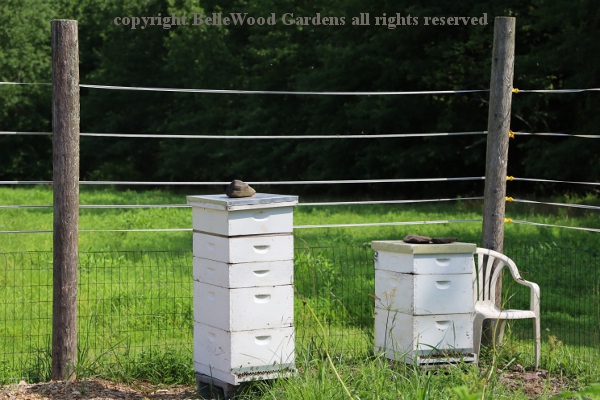
There are two bee hives in a back corner of the garden. Alfie is the bee-keeper.
Why keep bees? For honey, of course. And more bees mean better pollination.
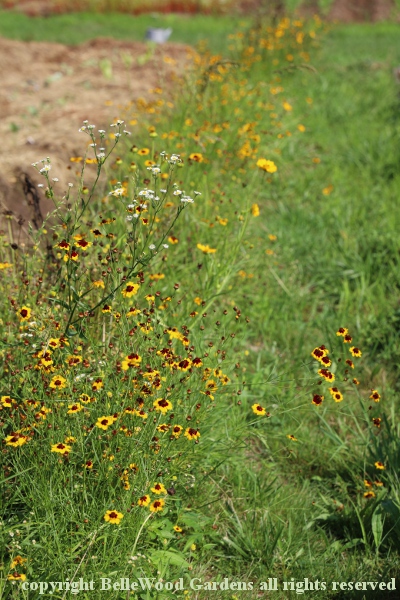
Janet plants rows of flowers here and there in the garden,
for the bees and for other pollinators. Besides, they're pretty.
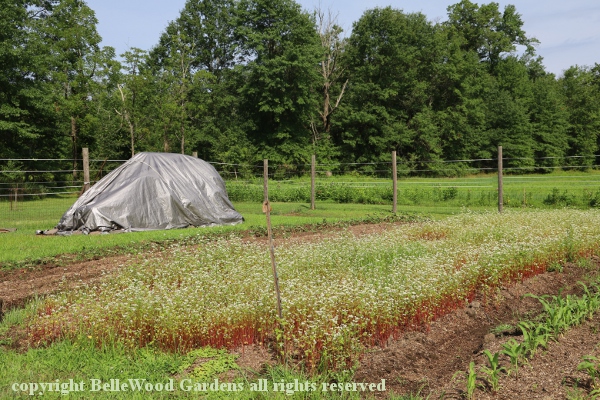
There's a double row area planted to buckwheat. It does attract pollinators,
and when it is plowed under as a green manure it will improve the soil.
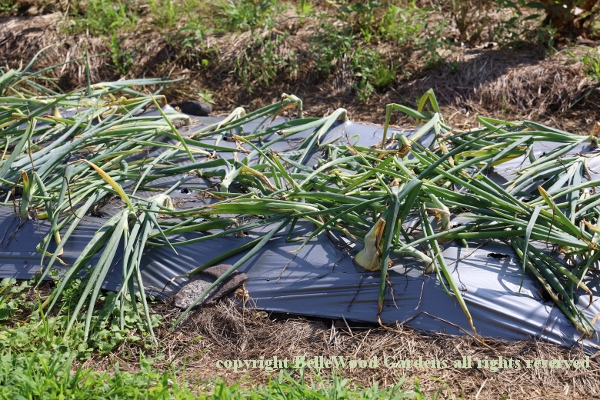
Sweet Walla Walla onions. When the leaves begin to fall over (lodging,
it is called) Janet knocks all of them down. Sends energy into the bulb
rather than maintaining the greenery which is no longer necessary.
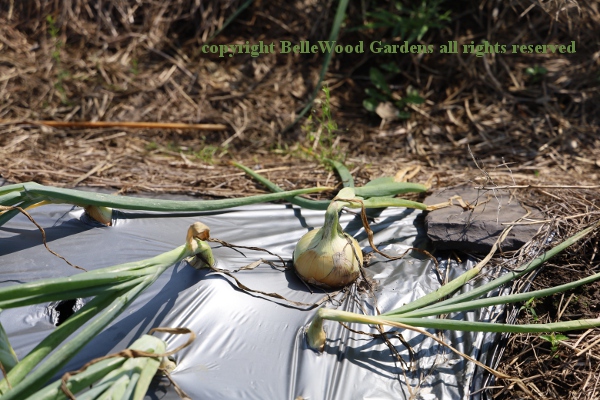
Just see how big and beautiful her onions are!
This is not a new garden, or even a relatively recent one. By now, Janet has a clear idea of what she will grow, what it takes to produce a crop, and how she will go about it. We did not discuss if she only gardens organically but it is clear that organic methods and techniques are an important part of her gardening style. For example, the different beans she grows are heirloom, open pollinated varieties. That means that she allows some of each kind of bean to grow beyond what you'd normally pick to eat. Once mature, she saves the seed for next year's garden, confident that it will come true, that is, the same as the plants from which she saved the seed. Hybrid seed cannot do that. Oh, you'll get beans from the saved seed, but they won't be the same as the bean plant from which they were saved.
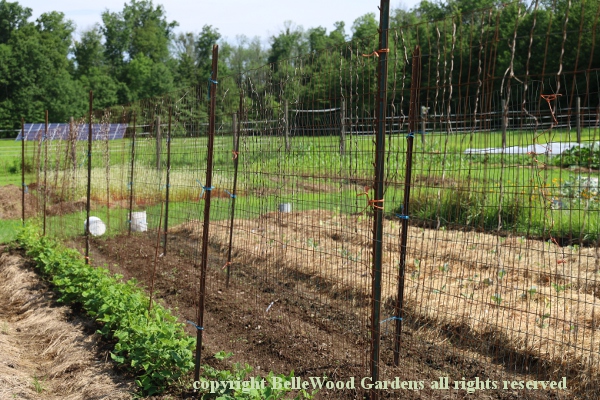
Beans may be either shorter bush type beans, or taller, climbing pole beans.
Obviously, if they are pole types they need something to climb on. Like a trellis.
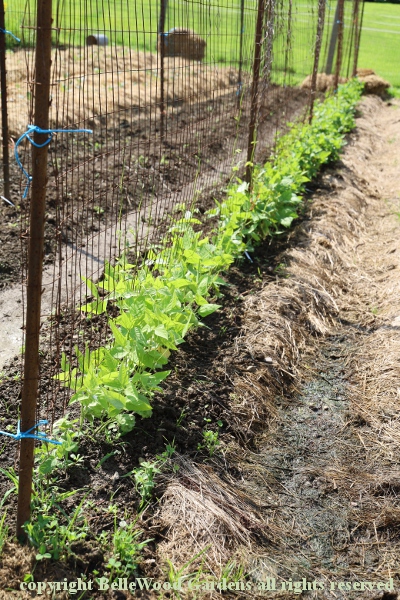
These are lima beans. Cannot say that I know anyone else growing them.
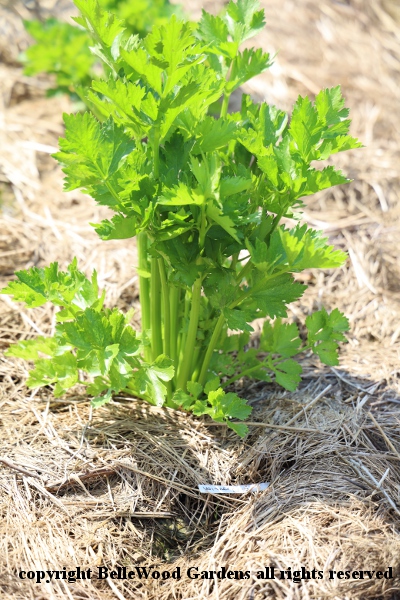
Janet only grows a few plants of celery. After all, how much do you need.
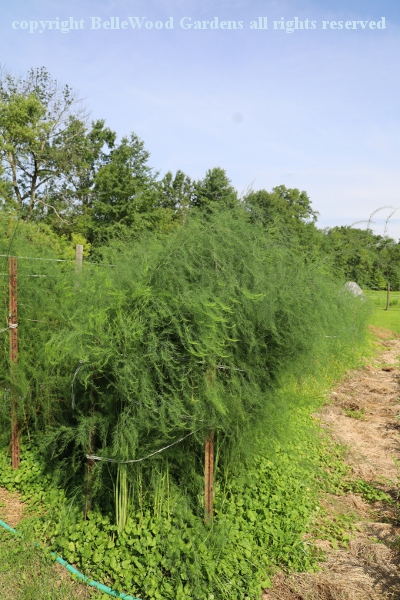
But she does have a very nice asparagus bed. If you like it
(and clearly she and Alfie do) you need lots of asparagus.
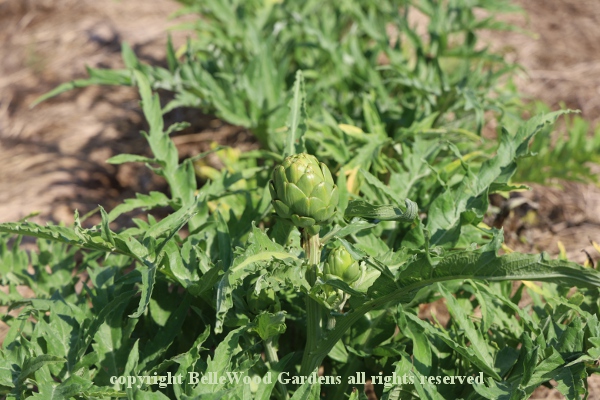
She even grows globe artichokes. They are usually raised as a biannual, somehow
kept going over the winter to flower the second year. Janet manages to do it in just
one year, starting the seed at the same time she starts the first crop of broccoli.
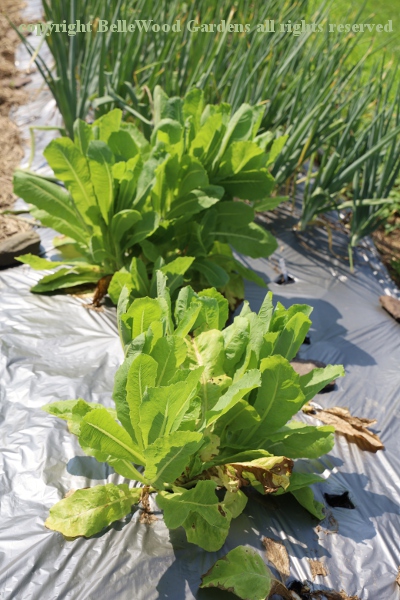
This is celtuce, an interesting lettuce cultivar grown for its thick stems
and used as a vegetable, not for salads. Other names are stem lettuce,
celery lettuce, asparagus lettuce, or Chinese lettuce. These are babies.
When ready to harvest celtuce will have a thick stalk with a sturdy rind.
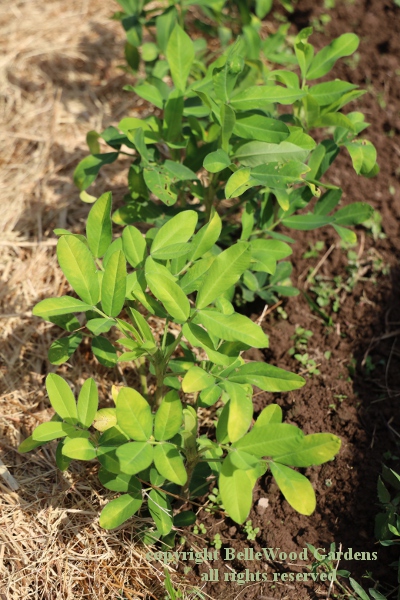
Lastly, here's a bean that you probably never think of as a bean. Well, actually
it is a relative of both peas and beans. It's a row of peanuts. They are very funky,
peanuts are. They flower up in the air. Once pollinated and the petals drop, they
burrow into the soil where the peanuts form. This is a striped peanut, Janet says,
and very good. I'll have to come back this fall and watch when she harvest them.
An exemplary vegetable garden, to say the least.
"Come again," Janet said, "later in the season when
there is more to show you, and to share." So I did.
Back to Top
Back to July 2019
Back to the main Diary Page